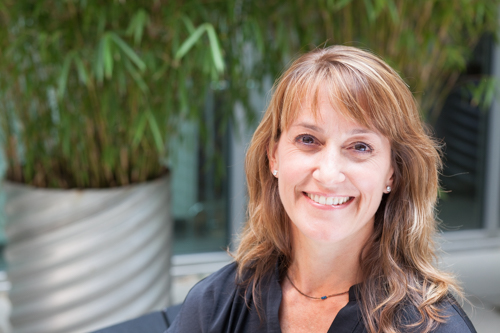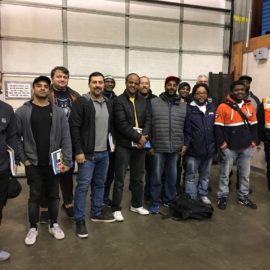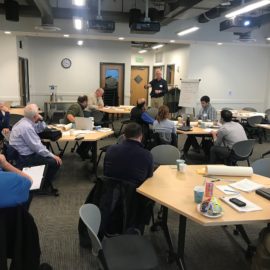
Women’s History Month offers EBP an opportunity to celebrate a few key players helping to bring the principles and practices of “exemplary building” to King County’s affordable housing sector. These women use their unique skills to bring together diverse teams and deliver the strong results that constantly move the needle towards a more equitable and sustainable future for their community. This community. Our community.
We posed the same set of intriguing questions to several of the women and women-led teams associated with EBP. We hope you’re as inspired by their stories and their leadership as we are.

How long and in what ways have you been involved with HDC’s Exemplary Buildings Program? What is it about EBP that resonates with you?
I learned of EBP in March of 2020. I joined a team that was working on the restart of an affordable housing project on Beacon Hill called North Lot. The project was under new ownership, and our client, non-profit developer SCIDPDA*, was considering EBP as part of their multi-faceted plan to finance the project. I had been on the project team in 2017 before its three-year hold, and many aspects already made it a rich project back then: affordable in-city housing, historic preservation requirements because of its adjacency to the iconic Pacific Tower, intergenerational tenants, incredible views of downtown and the water, and prime location on bus lines and proximate to diverse neighborhoods of the city. The two proposed buildings addressed Seattle’s need for affordable family housing with 275 units and the ground-floor tenants included an equity-based daycare and an age-in-place adult care center. Seemingly, the only social concern that was not being addressed with the programming was sustainability! Fortunately, SCIDPDA decided to pursue EBP, primarily for financial and operational reasons, but there was also a large equity piece to their decision. In addition to thermal and acoustic comfort, the tighter envelope and ERV requirements of EBP would ultimately provide residents with healthier air quality in their homes, filtering nearby freeway pollution, seasonal wildfire smoke, and other air concerns in the wake of the pandemic.
Exemplary building resonates with me because, as exhibited by North Lot, it incents solutions for three crises simultaneously–affordable housing, energy, and equity. It enables developers and architects to provide not only housing, but equitable housing to populations that have been displaced in our city and who have often been the victims of environmental injustice. EBP raises the bar for low-income housing, with energy-efficient buildings that consider comfort and quality of life as design priorities. Our Seattle neighbors in need of housing deserve homes with clean air, quiet places to work and study, and in a location where they are not spending most of their free time and energy commuting. We have a daunting demand for affordable housing in Seattle, but we must be thoughtful about how to add large quantities of housing stock in a sustainable manner. EBP consolidates both objectives.
*Seattle Chinatown and International District Preservation and Development Authority
Why are your specific skills and unique traits necessary and important for this work? How do they come into play in balancing the goals of delivering “exemplary” housing while maintaining affordability?
I graduated from the UW MArch program in 2016, so I am still learning a lot! My undergraduate degree is in mechanical engineering, and that might influence why I enjoyed working with the team on the technical aspects of integrating EBP requirements into our design. By “team,” I mean the rock star internal team of people I had the pleasure of working with–Noelle Galicia (Project Architect), Maggie Carson (Designer), Laurie Wilson (PM), and Jeff Reibman (PIC)–along with SCIDPDA, Marpac Construction, and an amazing group of consultants. It was truly Integrated Design Delivery. There were a lot of challenges, including the space/ventilation/acoustic requirements for a large quantity of DHW heat pumps and deciding whether the ERV system would be a centralized or unitized design. Specific skills that came into play were listening, clear communication and documentation, and fostering an environment where solutions were open source—shared between all parties. In finding a suitable space for the heat pumps, for example, we tried no fewer than five very different and complicated schemes, but the ultimate solution involved input from the MEP basis-of-design engineers, the MEP Design-Build Team, acoustics, landscape, civil, structural, the client, the contractor, and of course, architecture. All brains were on deck.
One of EBP’s defining traits is its collaborative model and team-based approach. Tell us a bit about how your team worked together to achieve exemplary building goals: what were the values, individually and collectively, that were most important to success?
(Ha, see answer to Q2!)
What leadership tool will you take forward from the extraordinary challenges of this past year?
I’ve learned that if I am confused or concerned about something that is being discussed, chances are that other folks in the meeting have the same questions! The team as a whole can learn a lot if you’ve created an environment where everyone feels safe to voice concerns, suggest ideas, and ask questions. The exemplary buildings program and some of the technologies are very new, and sometimes what seems like a strange idea can lead to an unexplored solution. When I apologized for asking MORE questions, Andi Burnham, our very wise energy consultant from Rushing, reiterated that there are absolutely no dumb questions. It will take fresh perspectives, outside-of-the-box thinking, and colossal collaboration to achieve our aggressive sustainability and housing goals for the next 10 years.
What would you say to a younger woman who is considering entering the architecture, engineering and construction (AEC) industry? What do you wish you had known prior to entering your profession?
Except for the Principal in Charge, our internal team is composed entirely of women and it is the healthiest, most enjoyable and rewarding project that I have ever worked on. Egos never come into play, which makes for a very inspiring work environment. More than 50% of the employees in my firm are women and think this has influenced the very familial and supportive culture, as the men that work in my office share and practice these same values. There is absolutely no reason that architecture, engineering, and construction should still be dominated by men—we all benefit from a diverse workforce. With climate change and its impacts on housing and resource scarcity, there is massive work to be done in the next decade and we need smart and passionate people in the AEC industry, including women and people of color who are now underrepresented there. One last note: it is possible to have both a family and a technical career. Men have done it for centuries!
On a lighter note: What or who has been an empowering song, poem, book, movie, or person for you this past year?
Honestly, I’ve watched way more Netflix than I care to admit over the past year! Over the last four years, I pulled away from national politics and I’m more inspired by the work these local folks are doing:
- The Block Project https://www.the-block-project.org/
- Seattle Times’ Project Homeless panel on racism and homelessness: (https://www.seattletimes.com/seattle-news/homeless/join-project-homeless-for-a-discussion-on-racism-and-homelessness/)
- The new dean of the UW College of Built Environments, Renee Cheng (https://www.washington.edu/news/2019/01/30/building-equity-a-talk-with-renee-cheng-new-dean-of-the-uw-college-of-built-environments/)
Stephanie is part of an incredible team from Weber Thompson working with EBP… read more of their stories here.


